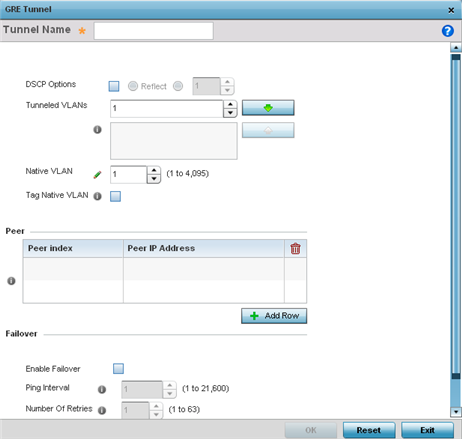GRE Tunnel Configuration
GRE tunneling can be configured to bridge Ethernet packets between WLANs and a remote WLAN gateway over an IPv4 GRE tunnel. The tunneling of 802.3 packets using GRE is an alternative to MiNT or L2TPv3. Related features like ACLs for extended VLANs are still available using layer 2 tunneling over GRE.
Using GRE, access points map one or more VLANs to a tunnel. The remote endpoint is a user-configured WLAN gateway IP address, with an optional secondary IP address should connectivity to the primary GRE peer be lost. VLAN traffic is expected in both directions in the GRE tunnel. A WLAN mapped to these VLANs can be either open or secure. Secure WLANs require authentication to a remote RADIUS server available within your deployment using standard RADIUS protocols. access points can reach both the GRE peer as well as the RADIUS server using IPv4.
To define a GRE tunnel configuration:
- Go to .
The Device Configuration screen displays. This screen lists wireless controllers, service platforms and access points within the managed network.
- Select a device from the list
displayed.
The selected device's configuration screen displays.
- Expand
the Network
node and select GRE.
The screen displays existing GRE configurations.
- Select the Add to create a new GRE
tunnel configuration or select an existing tunnel and select Edit to modify its
current configuration. To remove an existing GRE tunnel, select it from amongst those
displayed and select the Delete button.




